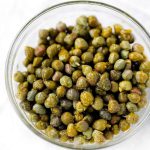Thyme
Thyme, the woody shrub that grows across the rocky areas of the countryside known as garigue, is said to produce some of the best honey when bees take its nectar and get to work. In fact, according to the writings of Horace (65 BC – 8 BC), the Romans grew thyme extensively for bee culture.
Thyme has been widely acknowledged as one of the most used herbs since as far back as ancient Egypt, where it was one of the ingredients in the embalming of corpses. The Egyptians also used thyme as a pain reliever, and included it in many of their medicines.
The Romans thought that eating thyme before or during a meal would cure poisoning, making the herb especially popular among Roman emperors. Thyme was also often given to Roman soldiers before they left for battle, as a sign of courage. The tradition of giving thyme as a farewell gift to soldiers continued throughout the Middle Ages in England, where the herb also caught on as a popular spice for use in cooking.
During the time of the Black Death, thyme was used in several medicines. In the Victorian Era, nurses would often bandage wounds with a thyme solution.
Thyme is still used widely in both medicine and cooking today. Healthwise, it is included in many products, such as those that aid respiratory health and others which combat sinus infection and even bad breath. As for culinary uses, thyme is most commonly paired with rosemary and sage, but it also goes well with a variety of other spices. It is used in many different sauces and dishes, and also lends itself nicely for a dry rub.





